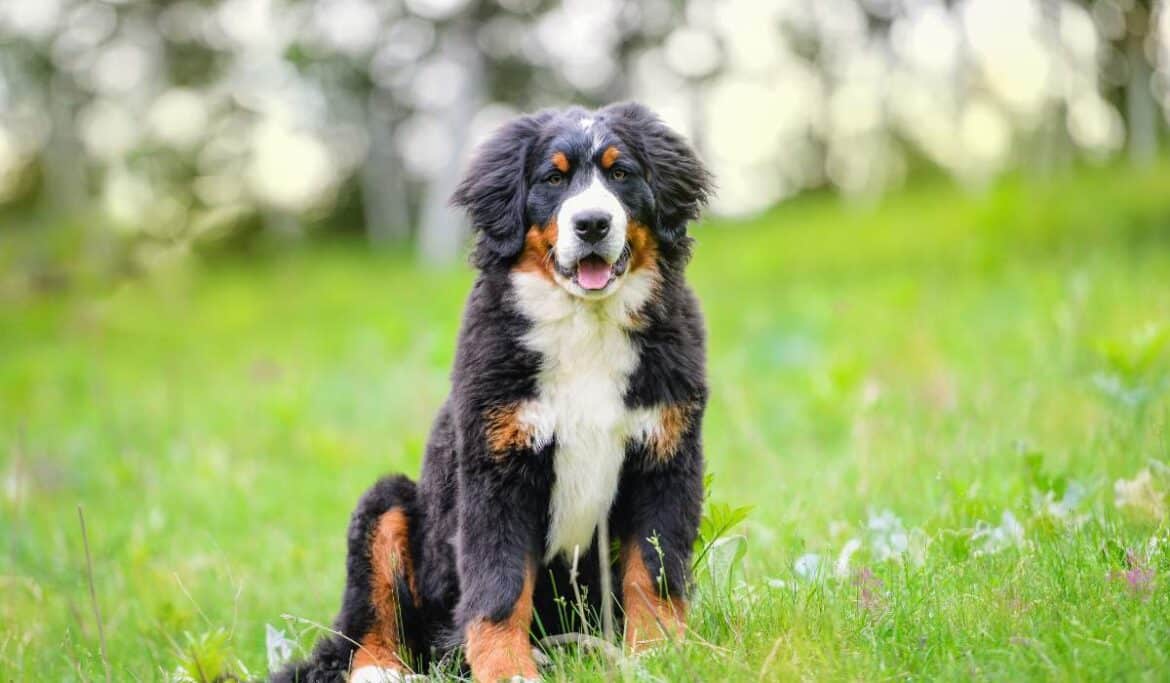Have you ever found yourself in a situation where your puppy picks up something they shouldn’t, and no matter how much you plead with them, they refuse to let it go? Teaching your puppy the “drop it” command can save you from such frustrating moments. “Drop it” is a crucial skill that every dog should learn early on as it helps keep them safe and prevents destructive behavior.
Teaching your puppy to drop items on command involves several steps, including positive reinforcement techniques and patience. By consistently practicing this skill, your furry friend will learn to release objects willingly when instructed. The benefits of teaching your dog to drop it are numerous, from preventing them from ingesting harmful substances to improving their overall obedience.
We’ll also provide an overview of the steps involved in teaching your puppy to drop items on command while highlighting the benefits of having a dog that knows how to do so.
Importance of Teaching Your Dog to Drop It
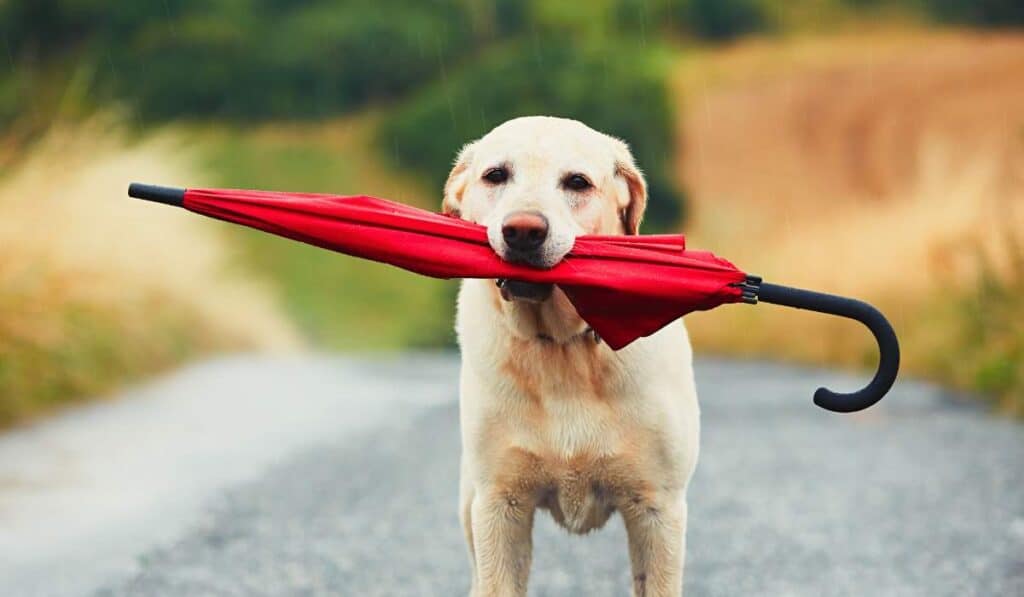
Teaching your puppy to drop it is an essential part of their training. It can help prevent destructive behavior and potential harm to your dog, avoid confrontations with other dogs or people, make training sessions more effective, and build trust and communication between you and your furry friend.
Preventing Destructive Behavior and Potential Harm to Your Dog
Puppies are naturally curious creatures that love exploring the world around them. However, this can lead them into trouble when they pick up objects that could be harmful to them. Teaching your puppy to drop it can prevent them from swallowing something dangerous or chewing on items that could cause harm.
Puppies often engage in destructive behavior when they are bored or anxious. If your puppy has learned the “drop it” command, you can redirect their attention away from destructive behavior towards a positive activity like playing fetch or learning a new trick.
Avoiding Confrontations with Other Dogs or People
If your puppy picks up something they shouldn’t have while out on a walk, teaching them the “drop it” command can help avoid confrontations with other dogs or people. For example, if your puppy picks up another dog’s toy at the park and refuses to let go, this could lead to an aggressive encounter between the two dogs.
By teaching your puppy to drop it on command, you can quickly retrieve the item before any confrontation occurs. This also applies if your puppy picks up an object that belongs to someone else while out in public.
Making Training Sessions More Effective
Teaching your puppy basic commands like “sit,” “stay,” and “come” is crucial for their overall obedience training. However, if they don’t know how to drop an object on command, these commands may not be as effective as they should be.
For instance, if you’re trying to teach your pup how to fetch but they won’t release the ball, it can be frustrating for both you and your furry friend. By teaching them the “drop it” command, you can make training sessions more effective and enjoyable for everyone involved.
Building Trust and Communication Between You and Your Dog
Teaching your puppy to drop it is a great way to build trust and communication between you and your dog. When they learn to obey this command, they understand that you are in control of the situation, which builds their confidence in you as their owner.
Furthermore, when your puppy learns that dropping an item on command results in positive reinforcement like treats or praise, they will be more likely to obey other commands as well. This strengthens the bond between you and your pup and sets the foundation for a happy and healthy relationship.
Step-by-Step Guide to Teaching Your Dog to Drop It
Teaching your puppy the “drop it” command is crucial for their safety and your peace of mind. Puppies love to explore and chew on everything they find, which can lead to swallowing harmful objects.
Here’s a step-by-step guide on how to teach your dog to drop it:
Starting with Basic Obedience Commands like “Sit” and “Stay”
Before teaching the “drop it” command, make sure your puppy knows basic obedience commands such as “sit,” “stay,” and “come.” These commands are essential building blocks for more advanced training.
To teach these commands, use positive reinforcement techniques such as treats or praise. Start by saying the command while holding a treat in front of your puppy’s nose. Once they sit or stay, give them the treat and praise them.
Using Positive Reinforcement Techniques Such as Treats or Praise
Positive reinforcement is an effective way to train puppies without using punishment or force. When teaching the “drop it” command, use positive reinforcement techniques such as treats or praise.
Start by playing fetch with a toy that your puppy likes. Once they have the toy in their mouth, show them a treat and say “Drop it.” If they drop the toy, give them the treat and praise them.
Gradually increase the level of difficulty by adding distractions such as other dogs or people walking by. This will help your puppy learn to focus on you even when there are distractions around.
Gradually Increasing the Level of Difficulty by Adding Distractions
As your puppy becomes more comfortable with dropping toys on command, gradually increase the level of difficulty by adding distractions.
For example, play fetch near other dogs or people walking by. If your puppy drops their toy when you say “drop it,” reward them with a treat and praise them.
If they don’t drop their toy right away, gently take it from them and say “Drop it” before giving them a treat. This will help reinforce the command.
Consistency in Training Sessions
Consistency is key when training your puppy to drop toys on command. Make sure you practice the “drop it” command during every play session.
Start with short training sessions of 5-10 minutes, several times a day. As your puppy becomes more comfortable with the command, gradually increase the duration of each session.
Remember to always use positive reinforcement techniques such as treats or praise and be patient with your puppy. It may take some time for them to learn the “drop it” command, but with consistency and patience, they will get there.
Pro Trainer Tips
- Always use positive reinforcement techniques such as treats or praise.
- Start by teaching basic obedience commands such as “sit,” “stay,” and “come.”
- Gradually increase the level of difficulty by adding distractions.
- Be consistent in your training sessions.
- If your puppy doesn’t drop their toy right away, gently take it from them and say “drop it” before giving them a treat.
- Remember to be patient with your puppy – learning takes time!
Choosing the Right Reward for Your Dog
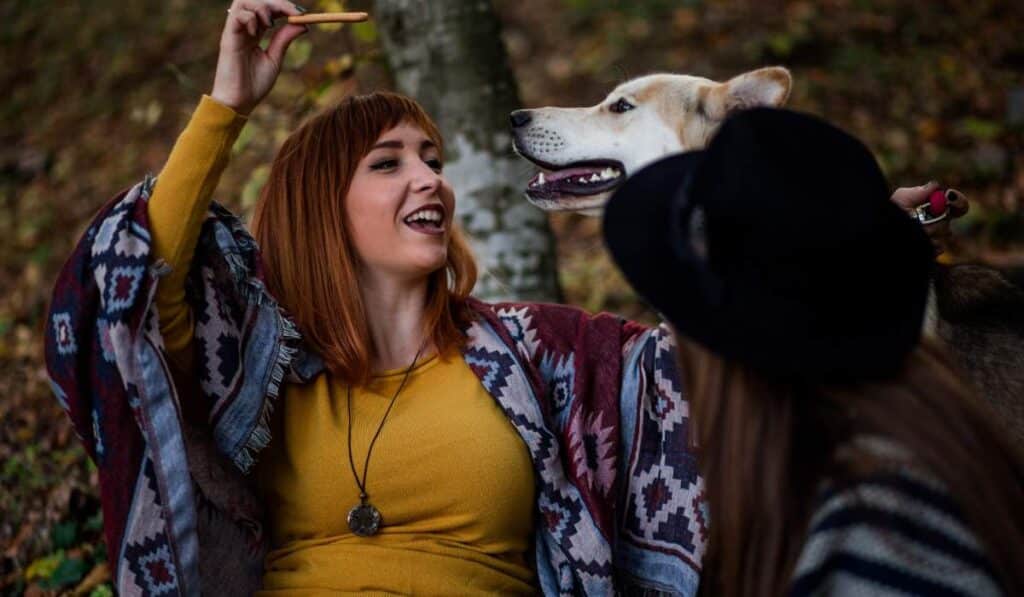
Finding the right reward is key. Dogs are motivated by different things, and knowing what motivates your dog is essential in teaching them new behaviors. “
Understanding what motivates your dog
Before you start training your puppy to drop objects on command, you need to understand what motivates them. Most dogs are motivated by food or treats, but some dogs may prefer toys or praise. Knowing what motivates your puppy will help you choose the right rewards during training.
If your puppy loves food and treats, use high-value treats like small pieces of chicken or cheese as a reward for dropping an object. If they prefer toys, use their favorite toy as a reward instead of food. And if praise is what motivates them most, give plenty of verbal praise and affection when they drop an object.
It’s important to note that not all rewards work for every situation or level of difficulty during training.
Varying rewards based on the situation or level of difficulty
When teaching your puppy to drop something, it’s important to vary the rewards based on the situation or level of difficulty. For example:
- When teaching a basic “drop it” command in a low-distraction environment like your living room, you can use lower-value treats like kibble.
- When practicing outside in the yard where there are more distractions like squirrels and other animals around, use higher-value treats like small pieces of chicken.
- If you’re working on resource-guarding behavior where your puppy has something they don’t want to give up, use their favorite toy instead of a treat.
Varying rewards keeps training interesting and helps prevent boredom from using the same reward repeatedly.
Ensuring that rewards are given immediately after the desired behavior
Timing is everything. Rewards should be given immediately after the desired behavior is performed. This helps your puppy understand what they did correctly and reinforces that behavior.
If you wait too long to give a reward, your puppy may not associate the reward with the desired behavior. For example, if you ask your puppy to “drop it” and they do, but then you take a few minutes to find their treat in your pocket before giving it to them, they may not connect the treat with dropping the object.
Starting with a Favorite Toy and Using Reinforcers
Teaching your puppy to drop it is an essential behavior for their safety and well-being. It can prevent them from ingesting harmful objects or getting into fights with other dogs over toys. Fortunately, this behavior can be taught through positive reinforcement training techniques.
Choosing the Right Toy
The first step in teaching your puppy to drop it is choosing the right toy. It’s essential to select a toy that is safe for your dog to play with and won’t break apart easily, as this could pose a choking hazard. Choose a toy that your puppy enjoys playing with and will want to pick up and carry around.
Using High-Value Treats as Reinforcers
Positive reinforcement is key when training your puppy to drop it. One of the most effective ways to reinforce this behavior is by using high-value treats during training sessions. These treats should be something that your puppy finds irresistible, such as small pieces of chicken or cheese.
When starting the training process, begin by holding one treat in each hand while showing your puppy their favorite toy. Allow them to sniff and play with the toy for a few minutes before saying “Drop it” while holding out one of the treats. When they release the toy from their mouth, immediately give them the treat as a reward.
Encouraging Playtime Before Introducing “Drop It”
Before introducing the “drop it” command, encourage playtime between you and your puppy using their favorite toy. This will help build trust between you and your pup and make them more willing to listen to commands during training sessions.
During playtime, practice exercises like chasing after the toy together or playing tug-of-war with it. When you’re ready to introduce the “drop it” command, say it firmly but calmly when your puppy has picked up their favorite toy during playtime.
Reinforcing Good Behavior
Reinforcing good behavior is crucial when teaching your puppy to drop it. After they have released the toy from their mouth when you say “drop it,” reinforce this behavior by giving them a treat and praising them with positive reinforcement phrases like “Good job!”
Repeat this process several times in a row, gradually increasing the amount of time between saying “drop it” and giving your puppy the treat. This will help them learn that dropping the toy on command is a desirable behavior.
Practicing Away from Reach
Finally, practice dropping the toy in different locations away from your pup’s reach. Start by placing the toy just out of reach and saying “Drop it.” When your puppy drops the toy, give them a treat as a reward. Gradually increase the distance between you and the toy until your pup can drop it on command from across the room.
Adding a Verbal Cue for “Drop It”
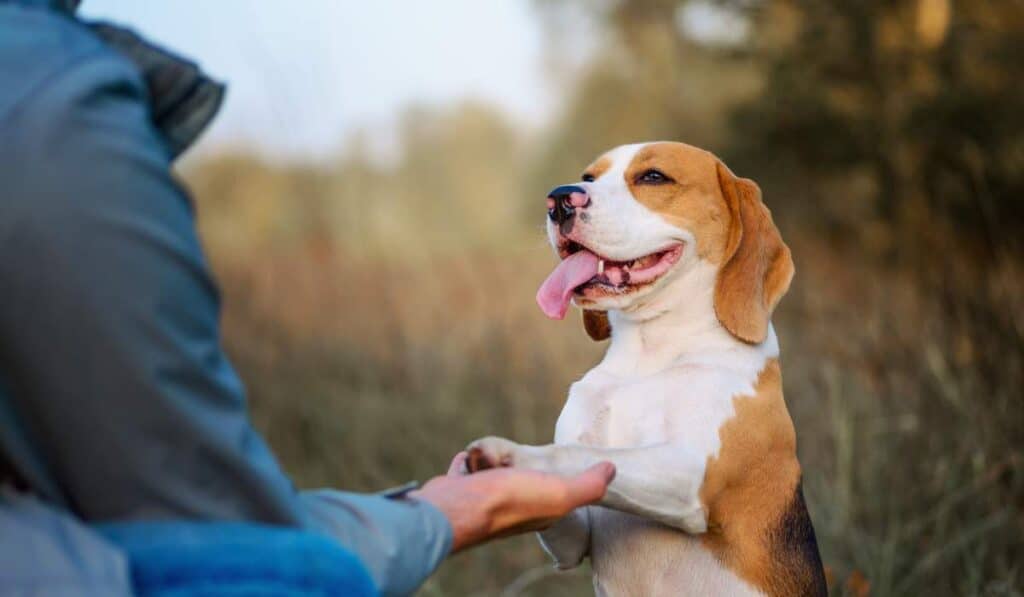
Teaching your puppy to drop it is an essential skill that can save you from a lot of trouble. Whether your pup has picked up something dangerous, or you need them to release their favorite toy, having a verbal cue for dropping is crucial. Here are some tips on how to add a verbal cue for “drop it” effectively.
Choosing the Right Cue Word
The first step in adding a verbal cue for “drop it” is selecting the right word or phrase. The key here is to choose something simple and easy to remember. Some examples of common cue words include:
- Drop it
- Give
- Let go
Whichever word or phrase you select, make sure you’re comfortable saying it repeatedly during training sessions.
Pairing the Verbal Cue with a Physical Gesture
Once you’ve selected your cue word, pair it with a physical gesture like holding out an open hand. This action will help your puppy recognize that they need to let go of whatever they have in their mouth.
To start, hold out your hand and say the chosen cue word firmly but calmly. If your puppy drops what they have in their mouth, reward them with praise and treats. If not, gently take the item from their mouth and repeat the process until they understand what’s expected of them.
Consistency Is Key
Consistency is essential when teaching any new behavior to your pup, including adding a verbal cue for dropping. Make sure you use the same command every time and avoid using different words or phrases that might confuse your dog.
During training sessions, repeat the command several times until your pup responds correctly each time before moving on to another situation.
Using Your Hand as an Alternative Cue
In some situations, such as when your puppy has something dangerous in their mouth or won’t release an item during playtime, using only verbal cues may not be enough. In these cases, you can use your hand as an alternative cue.
To do this, hold out your hand with the palm facing towards your pup and say the cue word. If they don’t release the item, gently open their mouth and remove it while repeating the command. Remember to reward them when they comply.
Knowing When to Leave It
While it’s essential to teach your puppy how to drop items on command, it’s equally important to teach them when not to pick up things in the first place. Teaching a “leave it” command can help prevent dangerous situations before they happen.
To teach “leave it,” start by holding a treat in your closed fist and saying “leave it.” Wait for your pup to stop trying to get the treat from your hand before rewarding them with another treat from your other hand. Repeat this process until they respond correctly every time.
Swapping Toys and Making Sure Your Dog Finds Them Equally Appealing
Introduce New Toys Gradually During Training Sessions
One of the most important things you can do is to make sure that your dog has a variety of toys to play with. This will keep them interested and engaged during training sessions, making it easier for them to learn new commands.
To start, introduce new toys gradually during training sessions. Start by offering just one or two new toys at a time. This will give your dog a chance to get used to each toy and figure out how they work before moving on to something else.
Ensure That New Toys Are Equally Appealing as Old Ones
It’s also important to ensure that any new toys you introduce are equally appealing as the old ones. Many dogs have specific preferences.
To make sure that your dog finds their new toys just as interesting as their old ones, try swapping them out periodically. Trade one toy for another every few days so that your dog gets used to playing with different things.
Encourage Playtime With New Toys Before Introducing “Drop It” Command
Before introducing the “drop it” command, encourage playtime with the new toy first. This will help build positive associations between the toy and fun times spent playing together.
Once your dog is comfortable playing with their new toy, you can begin working on teaching them the “drop it” command. Start by holding onto one of their favorite things – like a ball or a flirt pole – and asking them to “drop it.” When they do, immediately reward them with praise and treats.
Avoid Using Shoes or Other Objects You Don’t Want Your Dog To Associate With Playtime
While shoes may seem like an easy object for teaching your puppy how to drop things, it’s important to avoid using them during training sessions. This is because you don’t want your dog to associate shoes or other objects with playtime – this could lead to destructive chewing behavior.
Instead, stick with toys that are specifically designed for dogs. These will be more durable and less likely to cause problems if your dog decides to chew on them.
Use Training Sessions To Reinforce Positive Behaviors
Finally, remember to use training sessions as an opportunity to reinforce positive behaviors. When your dog drops a toy on command, praise them and give them treats. This will help build positive associations between good behavior and rewards.
As you work with your puppy on dropping items, remember that patience is key. It may take some time for them to fully understand the “drop it” command, but with consistent practice and positive reinforcement, they’ll get there eventually!
Emergency Techniques for Getting Your Dog to Drop Something
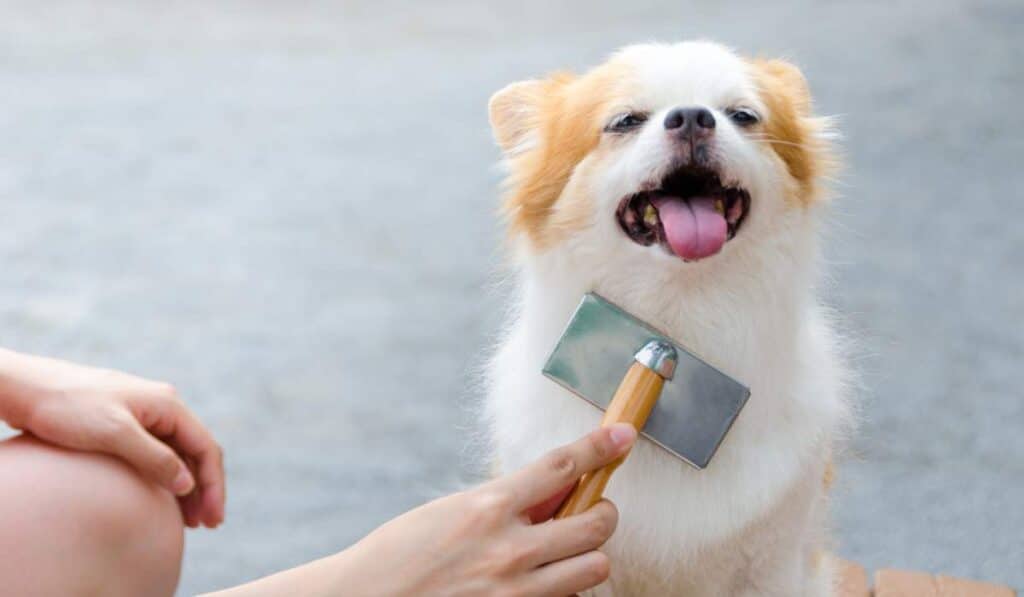
It’s important to have a few emergency techniques up your sleeve. Whether your dog has picked up something dangerous or simply won’t release their favorite toy, these techniques can help you regain control of the situation quickly.
Using a High-Value Treat as a Distraction
One effective way to get your dog to drop something it shouldn’t have is by using a high-value treat as a distraction. This technique works best if you’ve already trained your puppy on basic commands like “sit” and “stay.” Here’s how you can use this technique:
- Hold the treat in front of your dog’s nose and give the command “Drop it.”
- As soon as your dog drops the item, reward them with the treat.
- Praise your dog and give them lots of love and attention.
This technique works because most dogs will be willing to trade an object for a tasty treat. However, it’s important not to overuse this technique because you don’t want your dog to learn that dropping things always leads to rewards.
Making Loud Noises or Clapping Hands to Startle Your Dog
Another effective emergency technique is making loud noises or clapping hands loudly enough that startles your dog into dropping whatever they’re holding onto immediately. Here’s how you can use this technique:
- Make a loud noise like clapping hands or banging pots together.
- As soon as your dog drops the item, reward them with praise and affection.
- Remove the forbidden item from their reach.
This technique works well because dogs are naturally sensitive to loud noises and sudden movements, which can often startle them into releasing whatever they’re holding onto.
Using a Toy or Another Object to Trade with Your Dog
If your pup is holding onto something that isn’t dangerous but still needs to be taken away, you can use a toy or another object to trade with them. Here’s how you can use this technique:
- Hold the toy in front of your dog’s nose and give the command “Drop it.”
- As soon as your dog drops the forbidden item, reward them with the toy.
- Praise your dog and give them lots of love and attention.
This technique works because most dogs enjoy playing with toys, so they’ll be willing to drop one object for another.
Successfully Teaching Your Puppy to Drop It
Teaching your puppy to drop it can be a challenging task, but with consistency in training sessions and positive reinforcement techniques, you can successfully train your pup.
Consistency in Training Sessions and Positive Reinforcement Techniques
Consistency is key. You should set aside dedicated training sessions each day where you work on teaching your pup to drop it. During these sessions, make sure that you are using positive reinforcement techniques such as treats or praise when they do something correctly.
When teaching your pup to drop it, start by giving them an object that they enjoy playing with, like a toy or chew bone. Once they have the object in their mouth, say “drop it” firmly but not aggressively. If they don’t immediately drop the object, gently open their mouth and take the object away from them while saying “drop it” again. When they eventually let go of the object, give them a treat or praise them.
Repeat this process several times during each training session until your pup starts dropping the object on its own after hearing the command “drop it.” As you progress through each session, gradually increase the level of difficulty by adding distractions such as noise or movement around them.
Gradually Increasing the Level of Difficulty by Adding Distractions
Once your pup has mastered dropping an object during regular training sessions without any distractions present, start introducing distractions gradually into their environment during subsequent sessions.
For example, if you’re teaching your pup to drop a toy while outside at a park with other dogs around, start by practicing in a quiet area away from other dogs before moving closer and closer until they can successfully drop the toy even with other dogs nearby.
Remember that patience is key when adding distractions – don’t push too hard too fast or expect too much from your pup too soon. Celebrate small successes along the way.
Celebrating Small Successes Along the Way
As you work on teaching your pup to drop it, make sure to celebrate each small success along the way. This can be as simple as giving them a treat or saying “good job” when they drop an object on command.
Celebrating small successes will help keep your pup motivated and engaged in the training process, which is crucial for long-term success. Remember that training takes time and effort, so don’t get discouraged if progress seems slow at first.
Teaching your puppy to drop it is an essential skill that can prevent them from getting into dangerous situations. By following the step-by-step guide, choosing the right reward, and adding a verbal cue for “drop it,” you can successfully teach your puppy this important command. Remember to start with a favorite toy and use emergency techniques if needed.
In conclusion, teaching your puppy to drop it takes patience and consistency. But with the right approach, you can ensure that your furry friend learns this critical skill. So start training today and enjoy a safer and happier life with your pup!
Frequently Ask Questions (FAQs)
Can I train my older dog to drop it?
Yes! Although puppies are easier to train, older dogs can also learn new tricks. It may take more time and effort, but with patience and consistency, you can teach any dog to drop it.
What if my dog doesn’t like any toys or treats?
If your dog isn’t motivated by toys or treats, try using praise or affection as a reward instead. Some dogs respond better to verbal cues like “good boy” or a belly rub than they do to physical rewards.
How long does it take for a dog to learn how to drop it?
Every dog is different, so there’s no set timeline for learning how to drop it. Some dogs may pick up on the command quickly while others may take weeks or even months of consistent training.
Is it okay to physically force my dog’s mouth open to get them to drop something?
No! Physically forcing your dog’s mouth open can be painful and traumatic for them. Instead, try using one of the emergency techniques mentioned in the guide or seek help from a professional trainer.
What if my dog only drops things when they feel like it?
Consistency is key when teaching your dog to drop it. Make sure you’re using the same reward and verbal cue every time and don’t give up if your dog doesn’t drop something right away. With enough practice, dropping things will become a habit for your pup.

